Data interpretation Math Worksheets for Ages 4-6
6 filtered results
-
From - To
Empower your child's math skills with our engaging Data Interpretation Math Worksheets tailored for ages 4-6! These printable resources are designed to help young learners analyze and understand data through fun activities. Kids will explore counting, sorting, and interpreting simple charts and graphs, reinforcing essential early math concepts. Our worksheets encourage critical thinking and promote confidence in handling data, setting a strong foundation for future learning. Ideal for homeschooling or supplementing classroom learning, these interactive tasks make math enjoyable. Jumpstart your child's journey into the world of data with our curated collection of worksheets today!
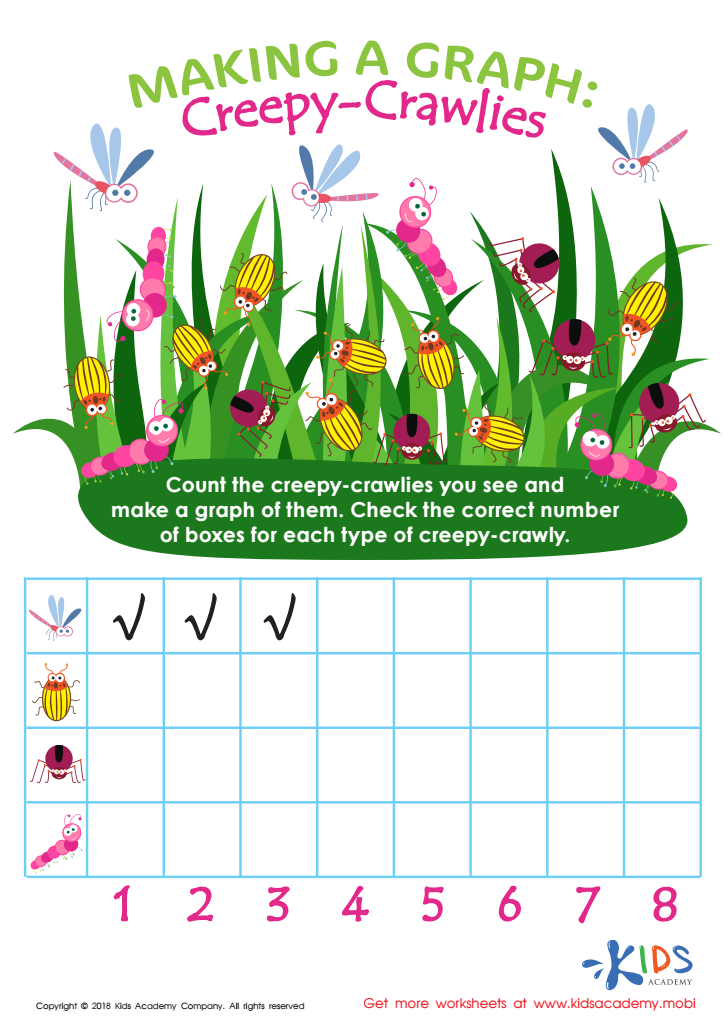

Making a Graph: Creepy Crawlies Worksheet
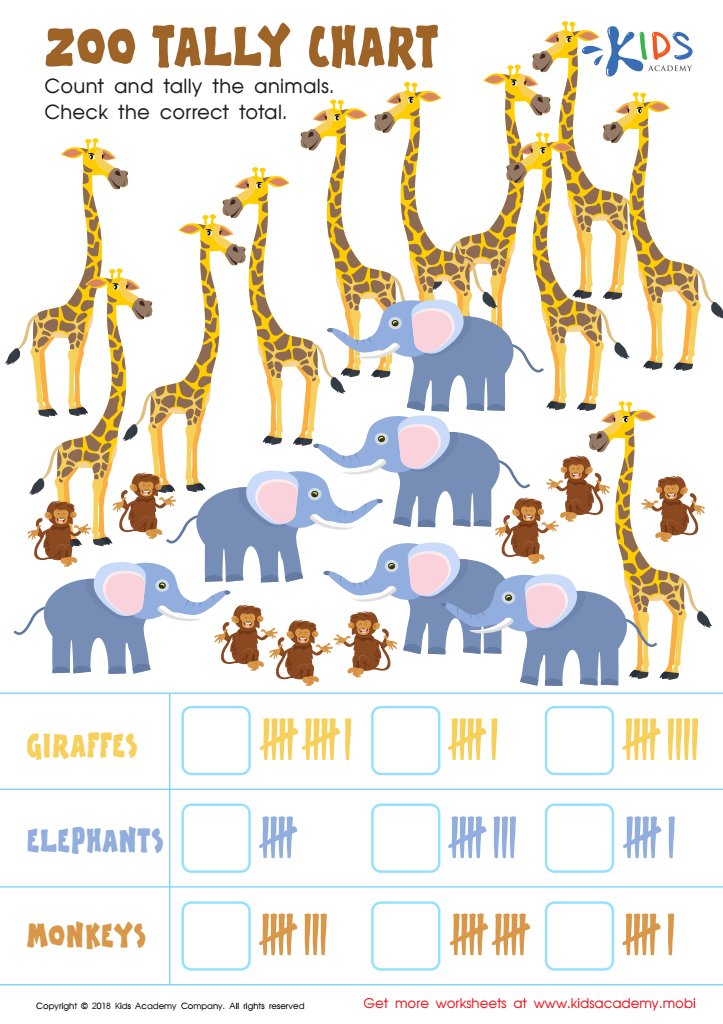

Zoo Tally Chart Worksheet


Pets Tally Chart Worksheet
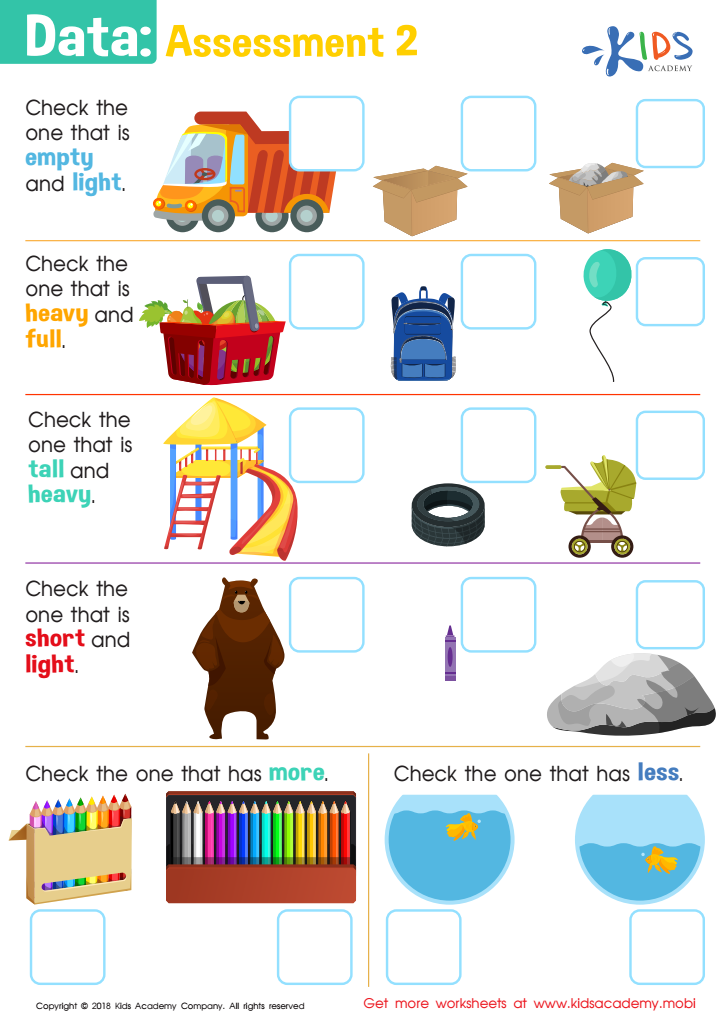

Data: Assessment 2 Worksheet
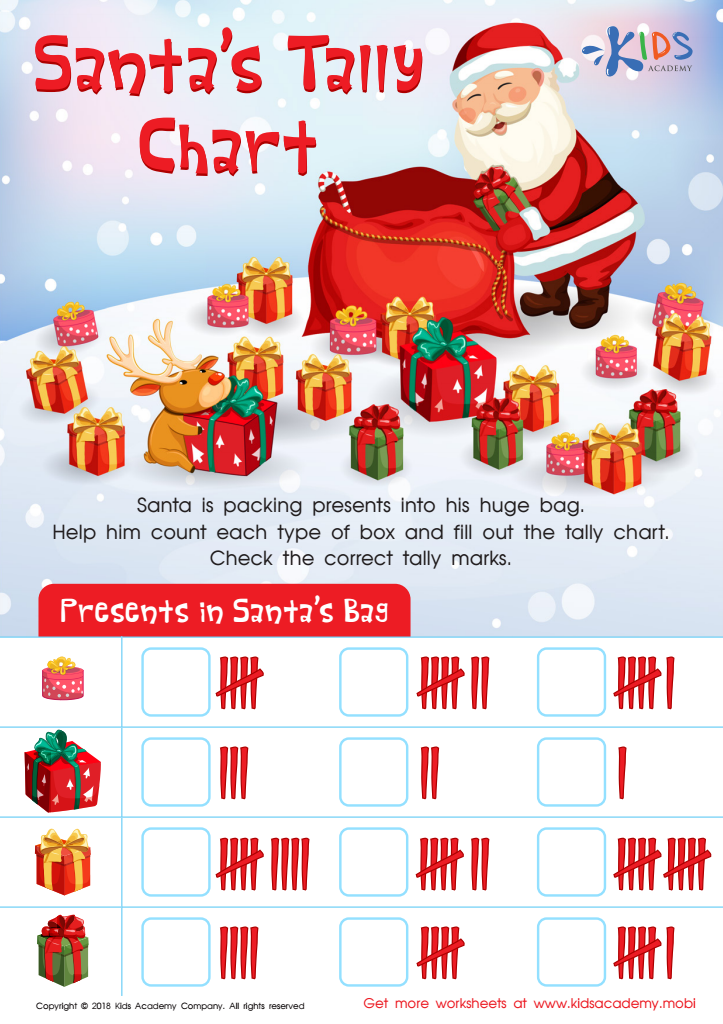

Santa Tally Chart Worksheet
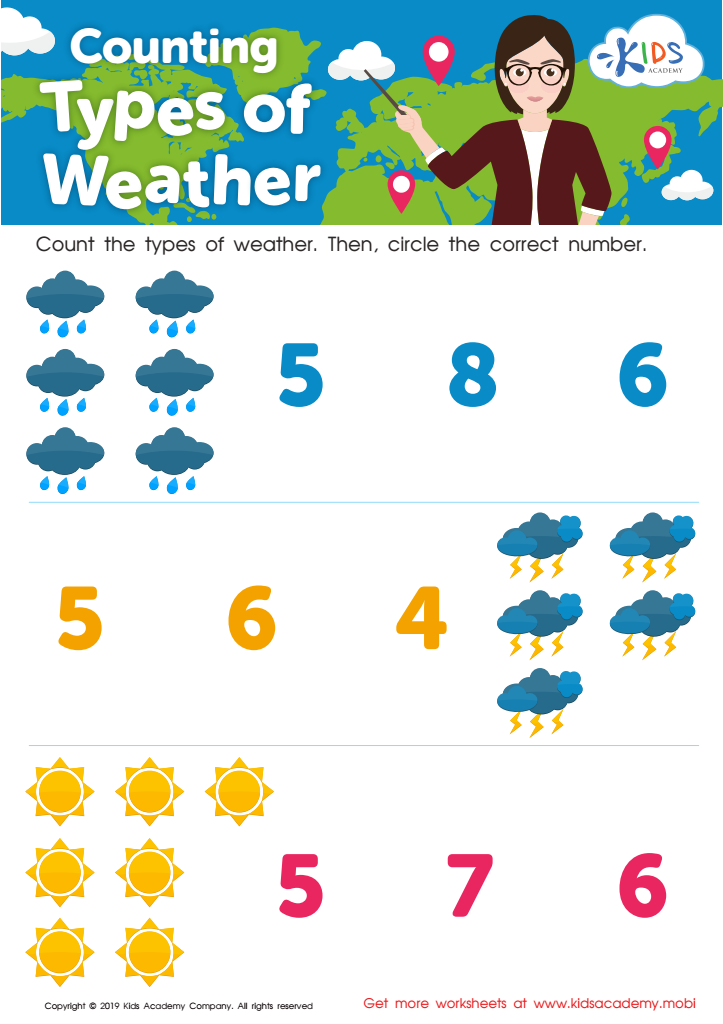

Counting Types of Weather Worksheet
Data interpretation in mathematics for children ages 4-6 is crucial for several reasons. Firstly, it helps enhance critical thinking and analytical skills at a formative stage in their education. By engaging with data, children learn to recognize patterns, categorize information, and make informed decisions based on evidence. These foundational skills foster a sense of inquiry that is essential for future mathematical concepts as well as science and social studies.
Secondly, early exposure to data interpretation promotes numeracy skills, aiding in a child’s ability to understand and navigate the world around them. Activities such as sorting objects, counting occurrences, or engaging in simple surveys allow children to grasp foundational concepts like numbers, frequency, and visual representation through charts and graphs.
Moreover, data interpretation nurtures collaboration and communication among young learners as they share findings and work together to analyze information. It also connects learning to real-world situations, making math relevant and exciting.
For parents and teachers, emphasizing data interpretation fosters a love for learning and lays down the groundwork for strong mathematical understanding, ensuring children develop the confidence to explore STEM subjects as they progress in their education.
 Assign to My Students
Assign to My Students






















